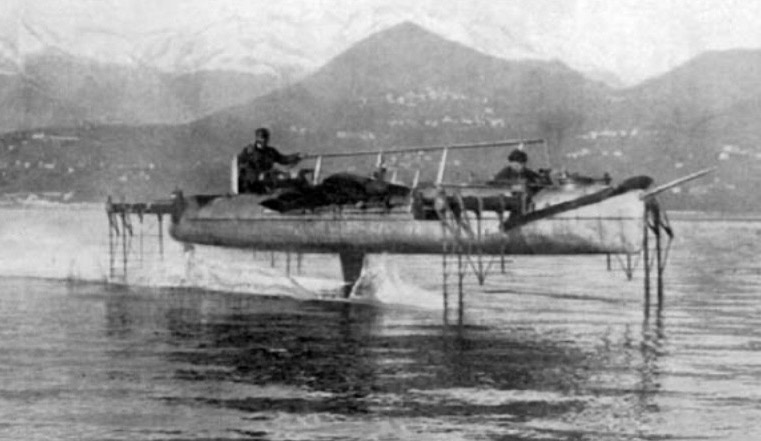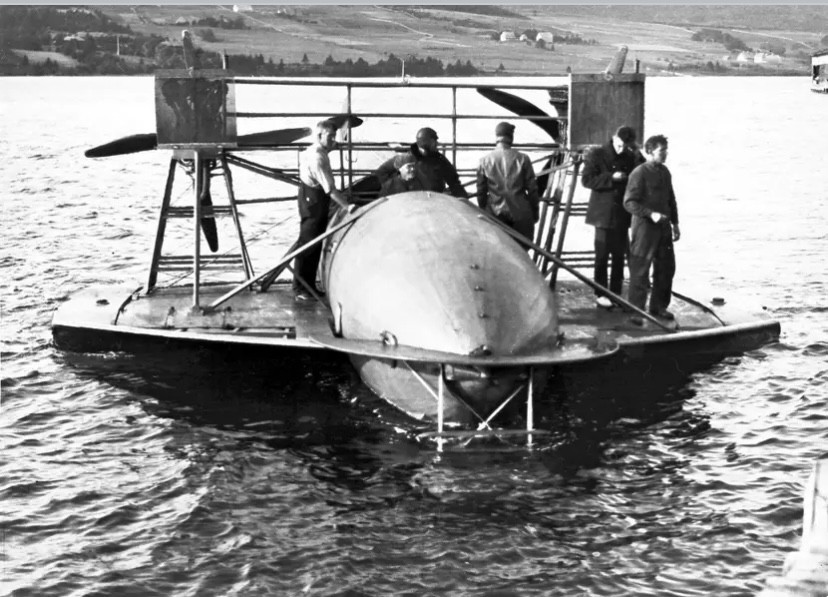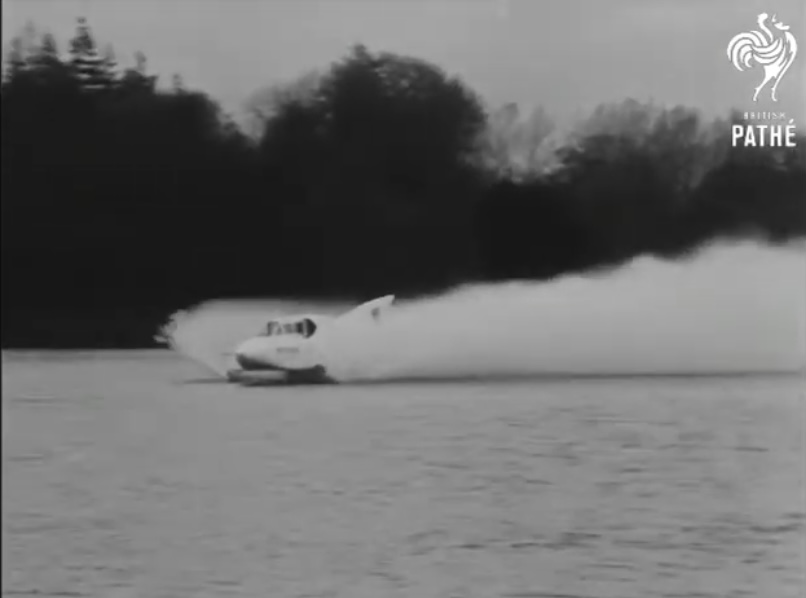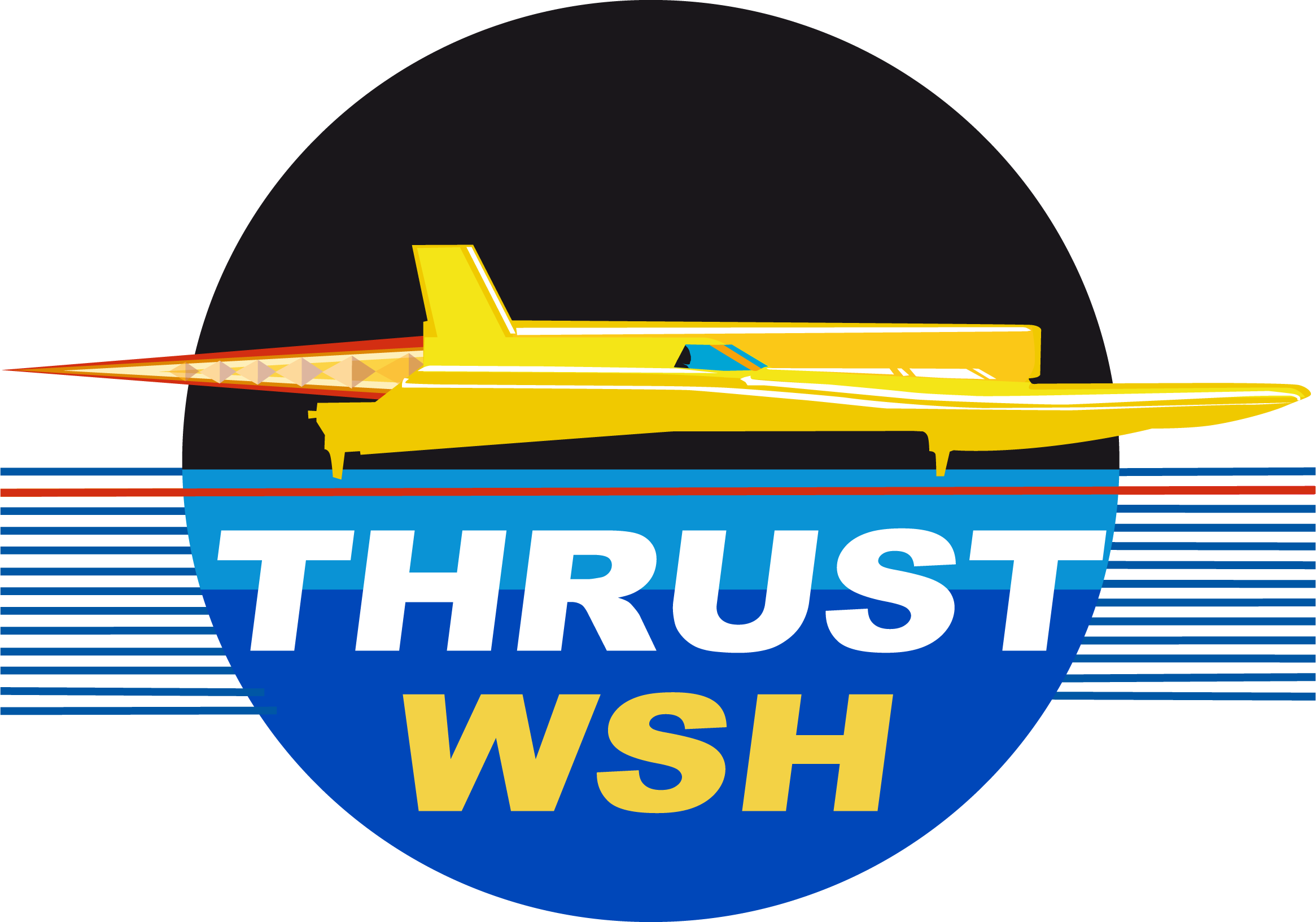As far as we know, the first high speed hydrofoil boat was designed by Enrico Forlanini in 1906. Using a ladder type construction mounting multiple wings on multiple struts it is said to have achieved 36.9 knots.

Hydrofoils are effectively wings that operate under the water’s surface and following on from Forlanini and others, foils have actually been used to set a Water Speed Record. Alexander Graham Bell and Casey Baldwin with the HD-4 powered by two Liberty aero engines driving propellers set a record of 70.86 mph in 1919. Little did they know it, but that was pretty much the limit using conventional foils.

Read more about their exploits here: https://en.wikipedia.org/wiki/HD-4
Fast forward to 1952 when Frank and Stella Hanning-Lees revived the idea with their jet powered White Hawk K5 boat, that was not successful. In fact, it was a bit of an embarrassing failure. Despite using hydrofoil data supplied by the British Admiralty they simply didn’t know how the foils would behave at speeds that needed to match those being planned by John Cobb and a young Donald Campbell with their jet boats. On test runs, it wallowed, suddenly lost lift and was swamped with water threatening to sink it. Before working with Campbell on the K7 hydroplane, Ken Norris had worked for a while with the Hanning-Lees but departed as soon as his realised how flawed the design was. To read more about it, click here for the story by Simon Lewis.
If you want to see it running – see the Pathe News archive clip here

Using modern CFD techniques, we have confirmed that traditional foils cavitate at around 70mph, vapourising the water above the foil. This creates an air pocket that robs the device of lift and prevents higher speeds as drag increases. America’s Cup yachts and SailGP racing catamarans have used foils with great success, reducing hydrodynamic drag by lifting the craft’s hull out of the water. Although they are designed to travel at speeds much lower than those we’re targeting, they too are pushing the cavititation barrier with crews describing sudden loss of speed and increased buffeting.
There is one other intriguing jet powered boat that looked promising but was ultimately shelved. Not a record breaker, it was instead a high speed test platform to collect data about hull and foil shapes. Bill Boeing – founder of the eponymous aircraft company – was also a fast boat fan. In fact, he financed a number of piston powered Unlimited Hydroplanes, one of which – Miss Wahoo – was raced by Mira Slovak in his name. And it was Boeing in the early 1960’s who developed the Aquajet HTS (hydrodynamic test system) claiming to have reached over 200kph. For 4 years they collected data at ever increasing speeds that culminated in tests in front of the military who were interested in high speed patrol craft. On this test the boat overturned and that was the end of the story.
